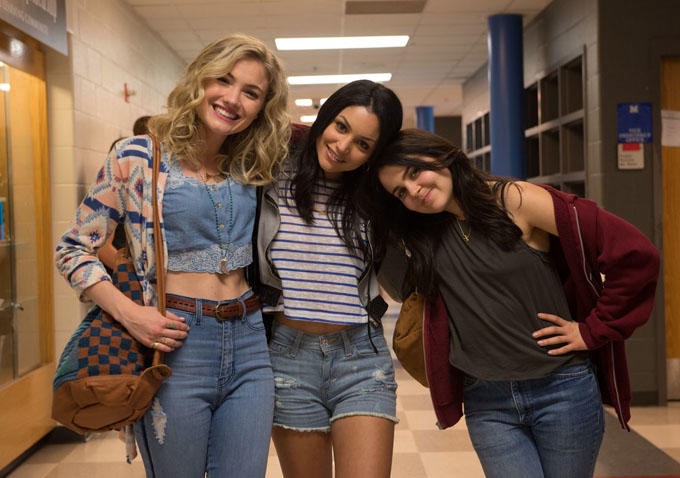Last December, I sat down in a dark movie theater in NYC.
Teenagers streamed in behind me, chattering excitedly, eager for the movie to
begin. Meanwhile, I was a nervous wreck. My hands were shaking and my stomach
was in knots as the lights went down. A moment later, the CBS Films logo came
up, and an advanced screening of “The DUFF” began.
But let’s rewind a bit.
I first heard the term “D.U.F.F.” — an acronym for Designated Ugly, Fat Friend — during my senior year of high school. I was sure I was the DUFF of my group of
friends. But upon approaching them about the subject, I discovered that every
single one of us identified as the DUFF. It was something we could all relate
to.
Not long after, I wrote the first draft of what would be my
debut novel, about a girl who is informed she may be the DUFF in comparison to
her beautiful friends. The book sold shortly after I graduated high school, and
not long after that, I received a call from my literary agent informing me that
film rights had been optioned. In 2014, the film was cast with Mae Whitman to
star, and “The DUFF” began filming.
The entire experience was a whirlwind, and I was, of course,
thrilled! But along with that excitement came fear: fear of the teen-movie makeover.
I am and always have been a huge fan of teen comedies. I’ve
seen them all — from the John Hughes classics to “Juno” — and while I love them dearly, there’s a persistent makeover
trope in many teen movies. In this trope, an already pretty girl gets a complete
makeover, and suddenly everyone who used to mock her begins to see her as hot. “She’s All That” has a whole plot built
around this. “Not Another Teen Movie” skewered
it perfectly. Even my beloved “The
Breakfast Club” is guilty!
So when it came to writing “The DUFF,” I wanted to create something different. I wanted to tell
a story where my protagonist never took out her ponytail and took off her
glasses and became a supermodel. I wanted to write about a girl who was herself
throughout. A girl who didn’t conform to someone else’s version of “cool.”
Just as important, I didn’t want the movie to make any girls
feel the way I had as a preteen –
like I had to change my appearance and wardrobe to make people like me.
With that being said, during the filming process, I wasn’t
the one writing or directing this movie. I was aware there were going to be
changes made — and I was mostly okay with that — but it was nerve-wracking. I was
no longer the one who determined the words on the page or the messages being
sent. Were they going to twist my story?
Was it going to be yet another teen-movie makeover? I would be lying if I
said I didn’t spend a few sleepless nights worrying. But as much as I wanted
control, I had to remind myself that this film was now in other people’s (very
capable) hands.
Which brings me back to the advanced screening of “The DUFF” back in December…
When the movie ended and the lights came back up, I was
filled with an overwhelming sense of relief. Director Ari Sandel and
screenwriter Josh, A. Cagan had nailed
the very essence of what it means to be the DUFF. (Not to mention, they are two truly awesome
dudes.) But even more gratifying were the young girls exiting the theater. They
weren’t wishing for new clothes or shoes or hairstyles. They weren’t wishing for a makeover! Instead, they were proudly
proclaiming themselves as DUFFs, seemingly united by their differences and
accepting of their flaws.
And that’s exactly what “The DUFF” is about.
Kody Keplinger wrote her first published novel, “The DUFF (Designated Ugly Fat Friend),” at the age of 17 during her senior year of high school. Since then, she has written two more books for teens (“Shut Out,” “A Midsummer’s Nightmare”) and one book for middle-grade readers (“The Swift Boys & Me”). She currently lives in New York City with her dog and a giant children’s book collection.






